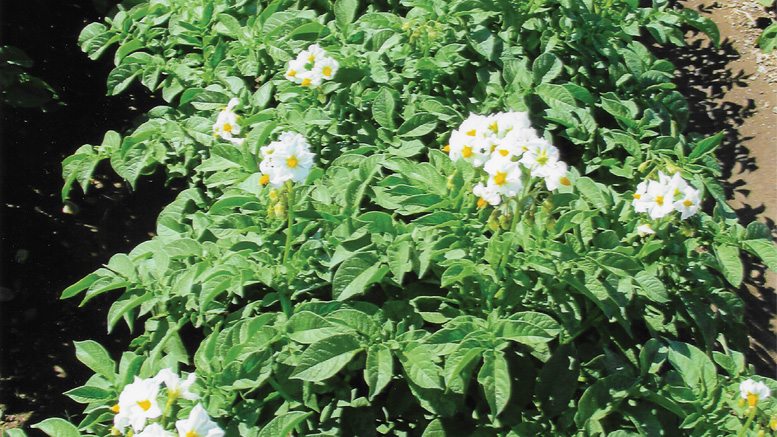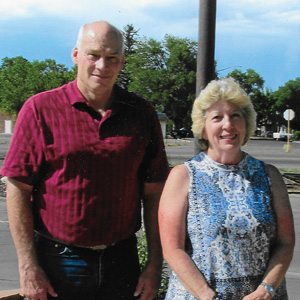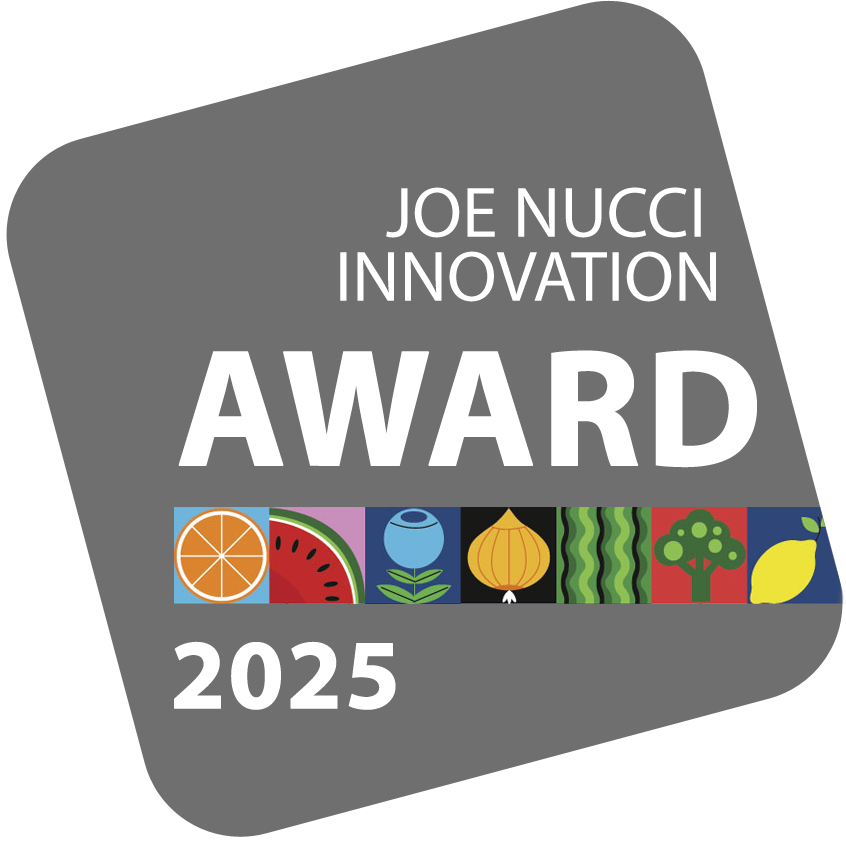SAN LUIS VALLEY POTATOES
October 2, 2018 | 14 min to read
The harvest from the San Luis Valley is thriving, with a slight increase in organic potato acreage and high-quality crops brought to market. The region benefits from its altitude, minimizing pests and disease, allowing for easier organic production. Companies like Maverick Potato Co. and Skyline Potato Co. report significant growth in organic offerings. Local demand drives innovative packaging and private labeling, while marketing efforts engage younger consumers, highlighting sustainability and fresh, locally grown produce.

Increase in organic acreage continues, good quality crop prevails as the harvest and shipments gain momentum.

Jim Ehrlich & Linda Weyers
The majestic Colorado Rocky Mountains provide a beautiful backdrop for some of the highest quality potatoes on the planet. The San Luis Valley has not disappointed again this year, as the second-largest fresh potato-producing region in the United States has produced a plentiful crop of incomparable potatoes buyers are welcoming into the market.
Grown at an elevation of 7,600 feet, these potatoes are planted in rich soil that contains unique mineral deposits, as the valley used to be a lakebed in the ancient past. Today, minerals are continuously deposited here from numerous mountain rivers, and the surrounding mountains provide a supply of pure water from the annual snow melt.
To further enhance their appeal and marketability, the Colorado Potato Administrative Committee and San Luis Valley growers and shippers have created strict guidelines for quality, a water sustainability plan and progressive, state-of-the-art production practices “to ensure that all Colorado potatoes meet the highest standards for food safety and taste,” according to Jim Ehrlich, executive director of the Monte Vista, CO-based Colorado Potato Administrative Committee (CPAC). About 95 percent of the crop is shipped to fresh markets locally, nationally and internationally.
This is the highest and largest Alpine valley in the world where commercial crops are grown, and that altitude naturally decreases the likelihood of disease and pests, minimizing the need for pesticide use. This also makes the region more favorable for organic production.
With harvest and shipping hitting full-stride by early October 2017, planted acreage was reported to be up slightly from last season. A flyover showed 51,900 acres, 800 more than 2016.
Organics, Specialties
Although they remain a small percentage of the overall crop, certified organics continue to make gains in the region, Ehrlich reports. Although CPAC does not have official data on organic acres, Ehrlich notes that “all shippers here are trying to do at least some organics. Colorado has an advantage because of reduced disease pressure and the lack of late blight that other areas face.”
The most updated Colorado Department of Agriculture statistics relating to organic potatoes showed about 8 percent of the total in 2015. Ehrlich reports that number continues to increase. One grower-shipper, for example, Maverick Potato Co., based in Center, CO, completed the conversion last year of 100 percent of its crop into certified organics.
Maverick co-owner Roger Christensen reports that organic production through his warehouse is about 75 percent in Russets, with the remaining in red and gold varieties. Much of Maverick’s product is now marketed through Farm Fresh Direct, headquartered in Monte Vista, CO. “Our organics have grown significantly,” says Dave Yeager, vice president of business development for Farm Fresh Direct. “We’re adding new varieties to the category, all grown in Colorado.”
Skyline Potato Co., Center, CO, has been marketing organic potatoes for 20 years and has developed a wide customer base and loyal following. According to Les Alderete, Skyline’s general manager, last year the company streamlined its operations, adding a new washer at its Horizon Potato facility in Center, CO. Both organics and conventional are run at Horizon, and the main shed at Skyline packs strictly conventional. The company markets a portion of its organic volume through Robinson Fresh, Eden Prairie, MN, using the Tomorrow’s Organic label. At the same time, the company sells its own Nature Fresh organic label through Skyline.
“There’s a big learning curve when you first get into organic growing, and not everyone will make it,” says Alderete, who cites a report from the USDA that shows organic production nationwide in 2016 was up 16 percent from the previous year.
Other shippers offering organics in their line include RPE Colorado in Monte Vista, CO; White Rock Specialties in Mosca, CO; and Canon Potato in Center, CO.
Whether organic or conventional, Russet varieties remain the primary potato shipped from this region. Overall, red potato production has increased slightly, but yellows have enjoyed an even greater jump, comprising nearly 10 percent of production. Fingerlings and other specialty varieties account for about 3 percent, says Ehrlich.
He hastens to add, however, that Colorado can grow any kind of potato desired. Pink-skinned potatoes, purple varieties, and unusually shaped potatoes are getting the attention of a full range of end-users — from executive chefs to “foodies” to creative home cooks seeking new, imaginative ideas for their families or for entertaining guests.
Packaging Options
While private labeling continues to gain a greater market share, shippers in the San Luis Valley maintain that recognition of their own brands and packaging quality are points keeping them ahead of the competition.
Rick Ellithorpe, co-owner of Aspen Produce, Center, CO, uses the company’s carton as an example. “We take our ‘Aspen’ logo very seriously. The ‘Aspen’ box is a little heavier cardboard, so it doesn’t move around as much on the pallet and is intact on arrival,” he says. “There are customers who call us first when they want the best quality cartons. We are also very careful about the accurate spud count within the cartons.” Ellithorpe adds the company will be capitalizing more on the well-known brand. “We have some more applications of that label that we will be rolling out in the future.”
The well-recognized label, however, is not the only facet that keeps Aspen Produce distinct. “We have the best quality control of anybody in the valley. It’s a little tighter and better. Jon Gonzalez, our head quality control monitor, was an inspector with the USDA (U.S. Department of Agriculture), so he knows,” says Ellithorpe.
As quality demand increases, interest in a variety of packaging sizes mirrors that trend. Aspen Produce’s Jed Ellithorpe, director of business development, points to an increase in popularity of 5-pound packages, which some prefer over the traditional 10-pound option for Russets.
Skyline Potato’s Alderete agrees, predicting that potato packaging options in the smaller sizes will persist in gaining popularity. He notes that the shrink of packaging sizes coincides with the shifting buying habits of consumers — especially the Millennials, whom he claims are opting for more convenience and are not buying the larger bags of potatoes. “You’ll see more of the smaller packaging — the 3- and 5-pound sizes — and smaller–sized potatoes.”
In addition, the greater percentage of San Luis Valley potatoes being packed under private labeling reflects the trend of retail chains and strong independent stores choosing to market products with their own brand. Increased brand recognition contributes to consumer loyalty, and packers are working to meet this increasing need of retailers.
“We are definitely moving more of our product in private labeling,” says Skyline’s Alderete. “We are flexible and do whatever we can to meet our customers’ needs.” Alderete notes that the company does a lot of custom-packaging for customers in Mexico.
Mexico is a major market for Colorado potatoes, which are limited to the 26-kilometer buffer zone at the border. A decision in August by a Mexican district court judge to continue the ban on potatoes from the United States to receivers beyond the 26-kilometer zone proved disappointing to Colorado potato shippers.
Freight Advantage, Buying Local

Savannah Schlaufman
Domestically, the San Luis Valley’s centralized location within the United States adds to the potatoes’ allure. It provides a natural freight advantage and becomes even more appealing with the continual popularity of locally grown. This area is also a natural fit for the multitudes that are “going green.”
“We are more sustainable than any growing area,” says CPAC’s Ehrlich. “Buying Colorado equals less food miles and a reduced carbon footprint with our natural freight advantage. We are justifiably proud of our state and of our unique region.”
Skyline’s Alderete agrees. “People want to support locally grown to help cut fuel usage and cut costs. That’s good for all of us.”
One-stop potato shopping available through this single growing region can be another way to save on freight costs.
“Colorado potatoes can be delivered to our customers in one or two days. Delivery can sometimes even be done overnight — to Dallas, for example,” says Jere Metz, salesman at Farm Fresh Direct, which markets both conventional and organic potatoes year-round. “It makes them fresher and reduces shrink.”
According to Ray Keegan of American Produce Co., a Denver-based receiver that services retail and foodservice accounts, “Colorado potatoes are fresher, they have more flavor and variety, and they are convenient and economical. They are the best answer for my customers.”
CPAC Focuses on New Look, Social Media and Reaching Kids
Continued increasing focus on social media, enhanced by its new logo and revamped website, top the list of marketing endeavors of the Monte Vista, CO-based Colorado Potato Administrative Committee (CPAC).
The upgraded website, coloradopotato.org, includes increased content management, updated pictures and a new logo. The logo’s redesign features a sun behind mountain peaks with fields in the foreground and emphasizes Colorado’s San Luis Valley. Shippers are being encouraged to add the logo to their bags. “We will continue our program with Kwik Lok, replacing the old logo with the new one,” says Linda Weyers, CPAC assistant director. A new monthly recipe and a grower spotlight will be rotating features.
Managing the digital presence and additional promotions is new marketing administrative assistant Savannah Schlaufman. A recent graduate of Alamosa, CO-based Adams State University, Schlaufman is currently enrolled in the master of business program there. She will manage the ongoing work on the committee’s social media, including Facebook, Twitter, LinkedIn and Pinterest.
Schlaufman is also working with Fexy Media, Mercer Island, WA, in the production of a video demonstrating how to prepare Colorado waffle iron potatoes. Because of Fexy’s widespread reach through blogs and other social media outlets, this clip should enjoy wide distribution to targeted audiences, says Schlaufman.
Reaching the Kids
Instead of holding the written essay contest CPAC has coordinated in the past few years, a new competition utilizing video format is being offered throughout Colorado. Middle and high school students are invited to produce a video that demonstrates in two minutes or less why they love Colorado potatoes and why the potatoes are part of their healthy lifestyle. Winners receive a $300 adventure pack, which includes gift cards to recreational outlets and sporting goods stores. Applications will be sent out prior to the schools’ winter holiday breaks.
Another activity involving the educational system is CPAC’s participation in the Potatoes USA Salad Bar Challenge. The committee has funded 15 salad bars in state schools and is aiming to increase that number up to 100. The idea “is to get kids to eat healthy, and with ‘potato-friendly’ salad bars, we can encourage them to eat more potatoes as well,” says Weyers.
As part of a pilot program, CPAC sponsored two salad bars in the Mapleton School District in Denver. One salad bar featured seasoned potato cubes. Working with the schools, CPAC is able to track potato consumption, which is another advantage. Overall, Potatoes USA is challenging the potato industry to sponsor 3,000 salad bars in the next five years.
Annual Potato Festival
The spotlight on Colorado potatoes was especially bright when CPAC held its annual Potato Festival in September 2017 in Monte Vista, CO. The event kicked off with live entertainment and food served from the Spud Nation truck at Chapman Park.
As in years past, a free Potato Field Bus Tour gave the public an opportunity to learn how potatoes are grown and harvested. CPAC sold bags of SLV potatoes, T-shirts and the association’s cookbooks at its booth. The arts and crafts fair, food vendors, and the popular antique tractor display were all part of the festivities.
Saturday’s events included one of the more popular activities — free baked potatoes grown in the San Luis Valley were served all day. The annual chefs’ competition and judging brought several professional and student chefs to the Valley from the American Culinary Federation-Colorado Chapter in a contest to create their tastiest potato dishes.
Kids were the focus throughout the festival with activities including a potato sack race, a potato decorating contest and the “shooting for accuracy” contest, which featured homemade potato cannons.
This month, Colorado potatoes are represented at the Produce Marketing Association’s Fresh Summit in Orlando, FL. This past August, the CPAC had a booth at the Colorado State Fair.
4 of 30 article in Produce Business October 2018

